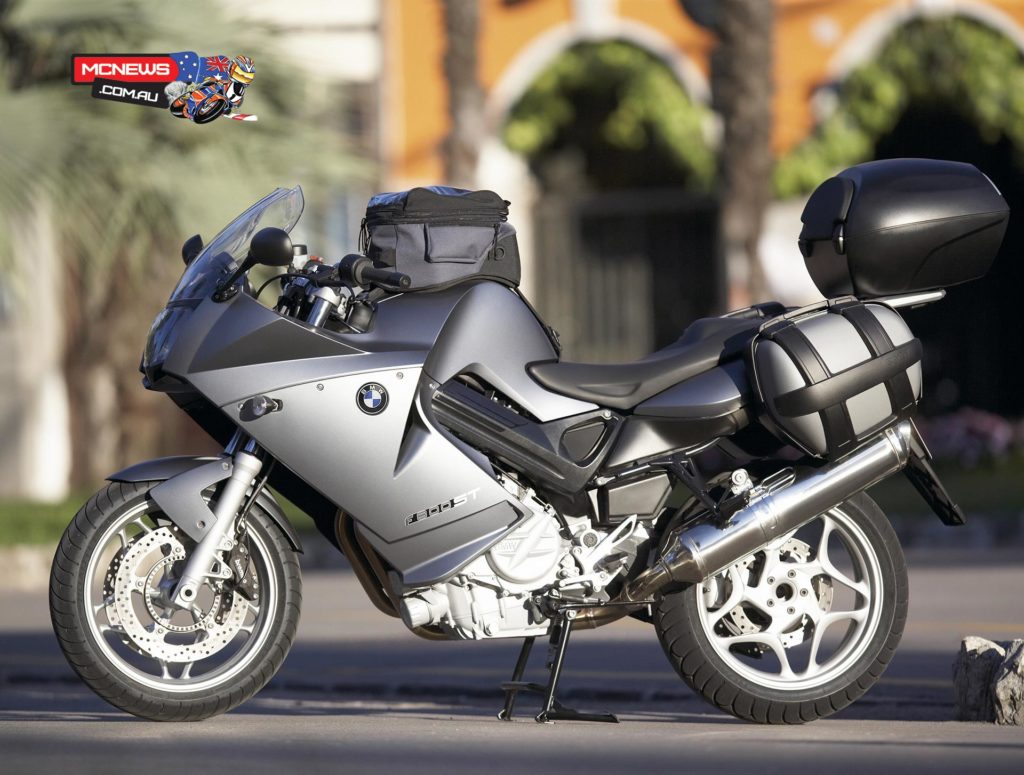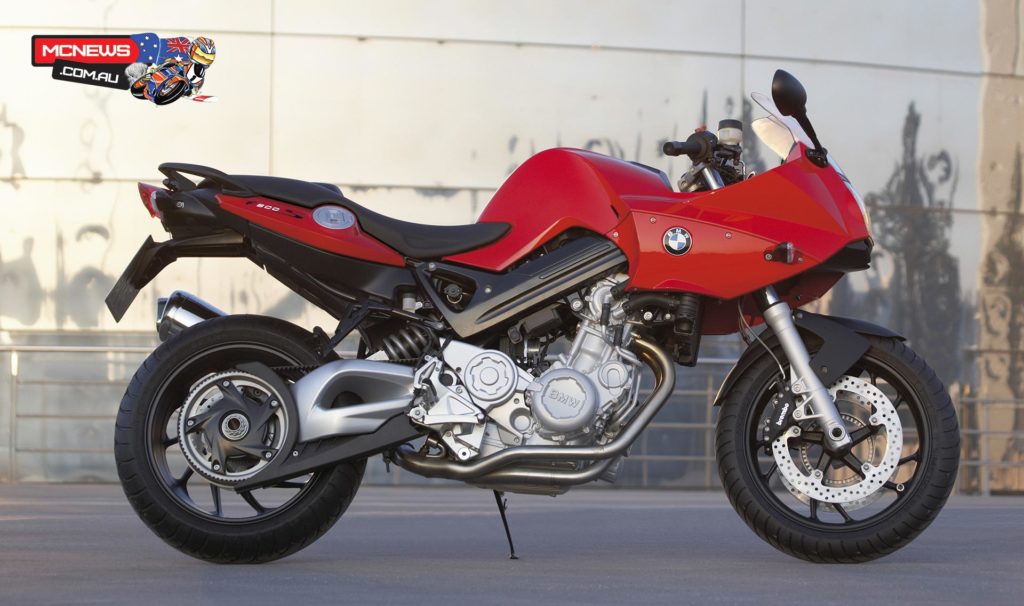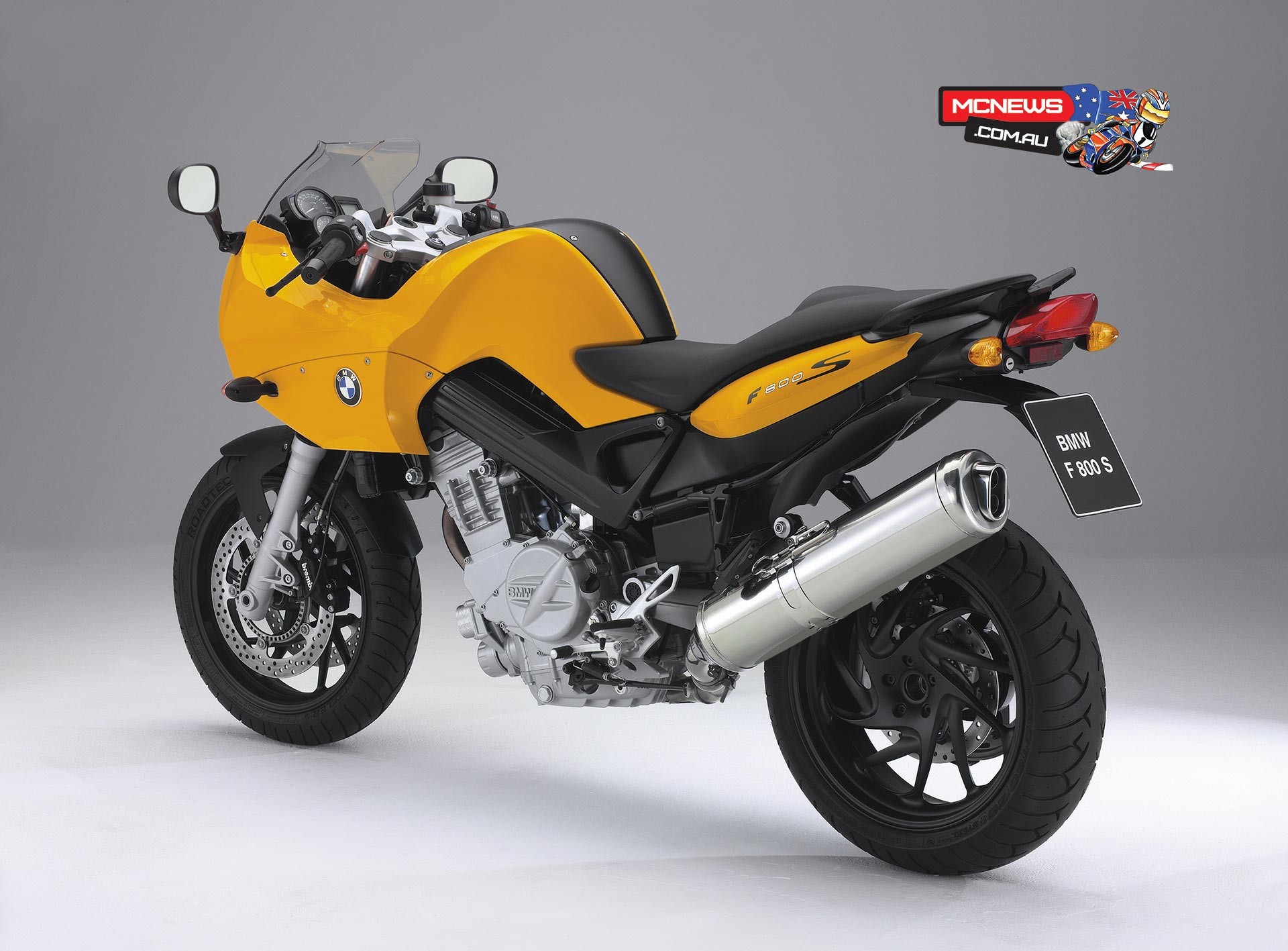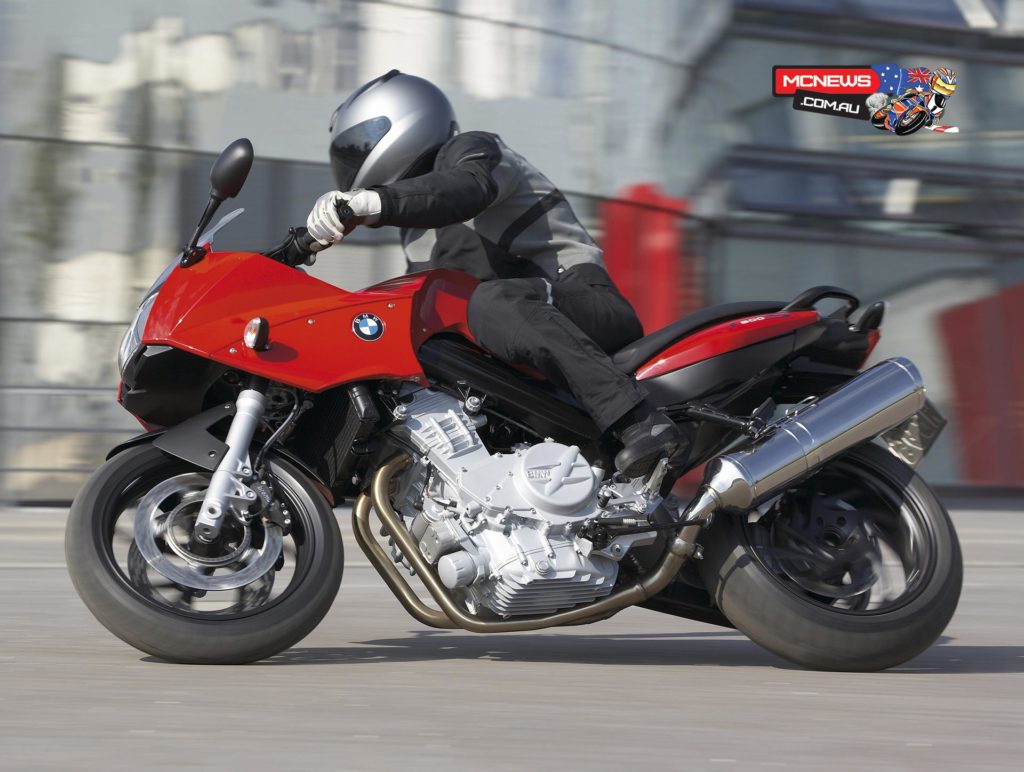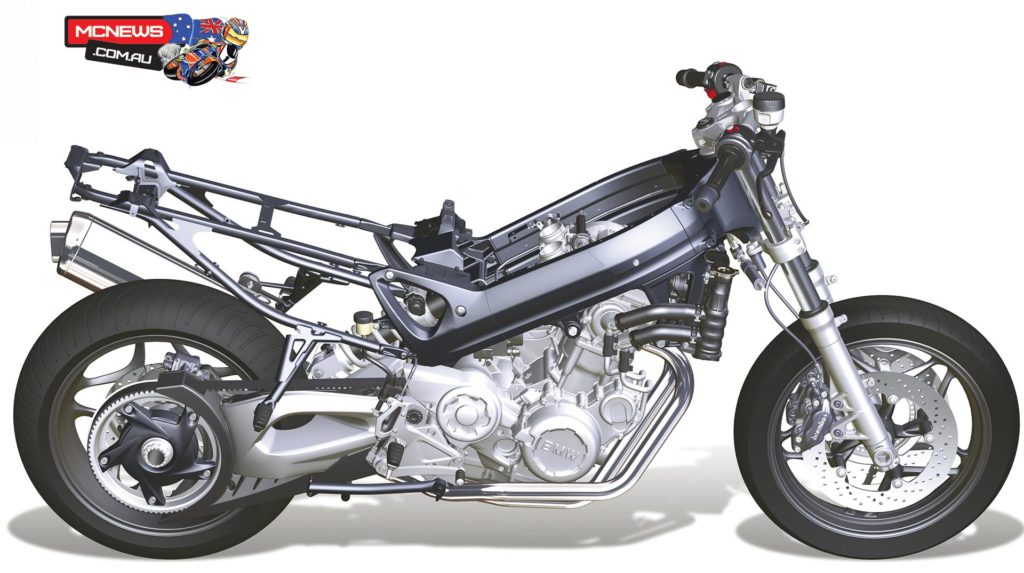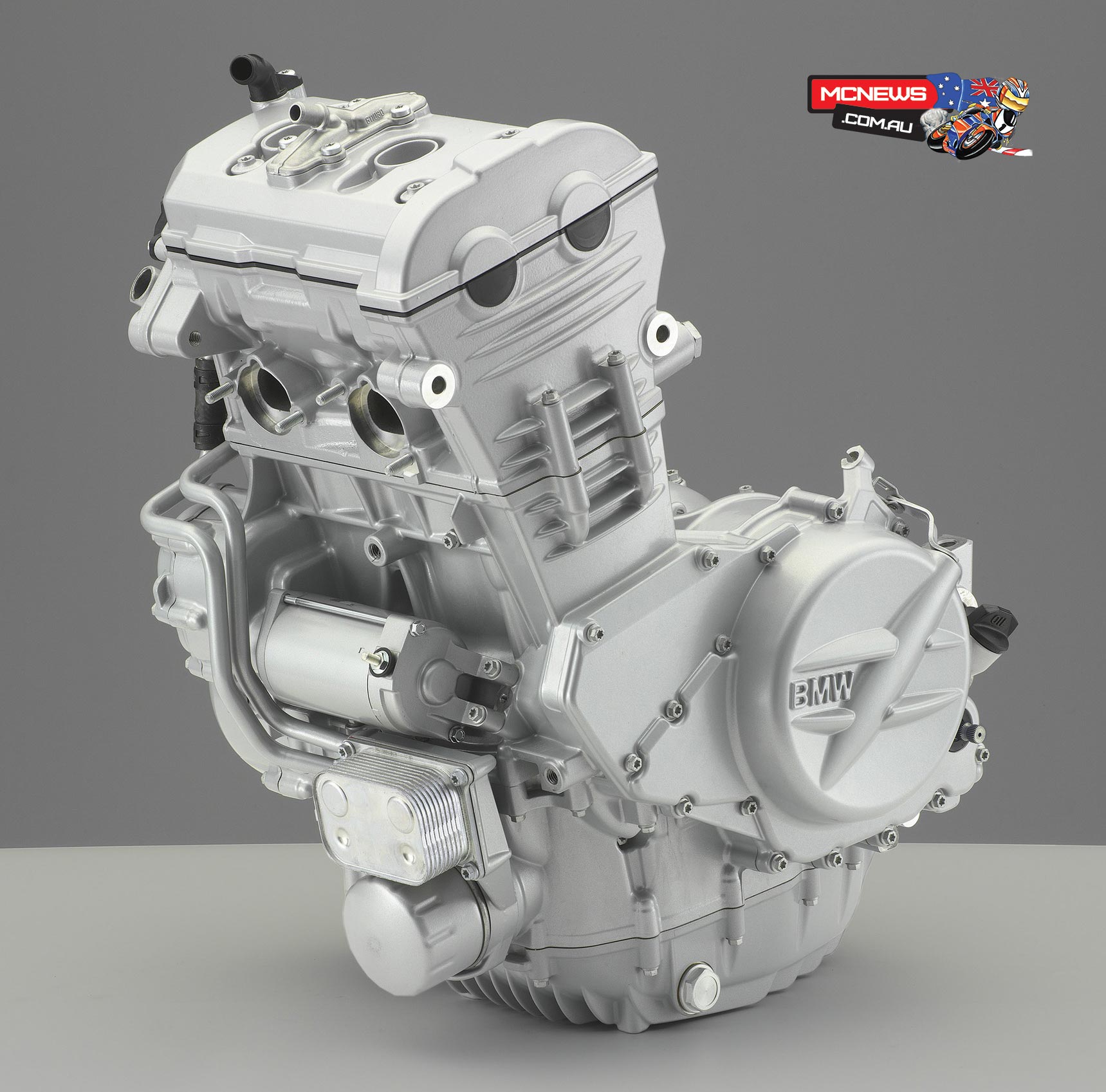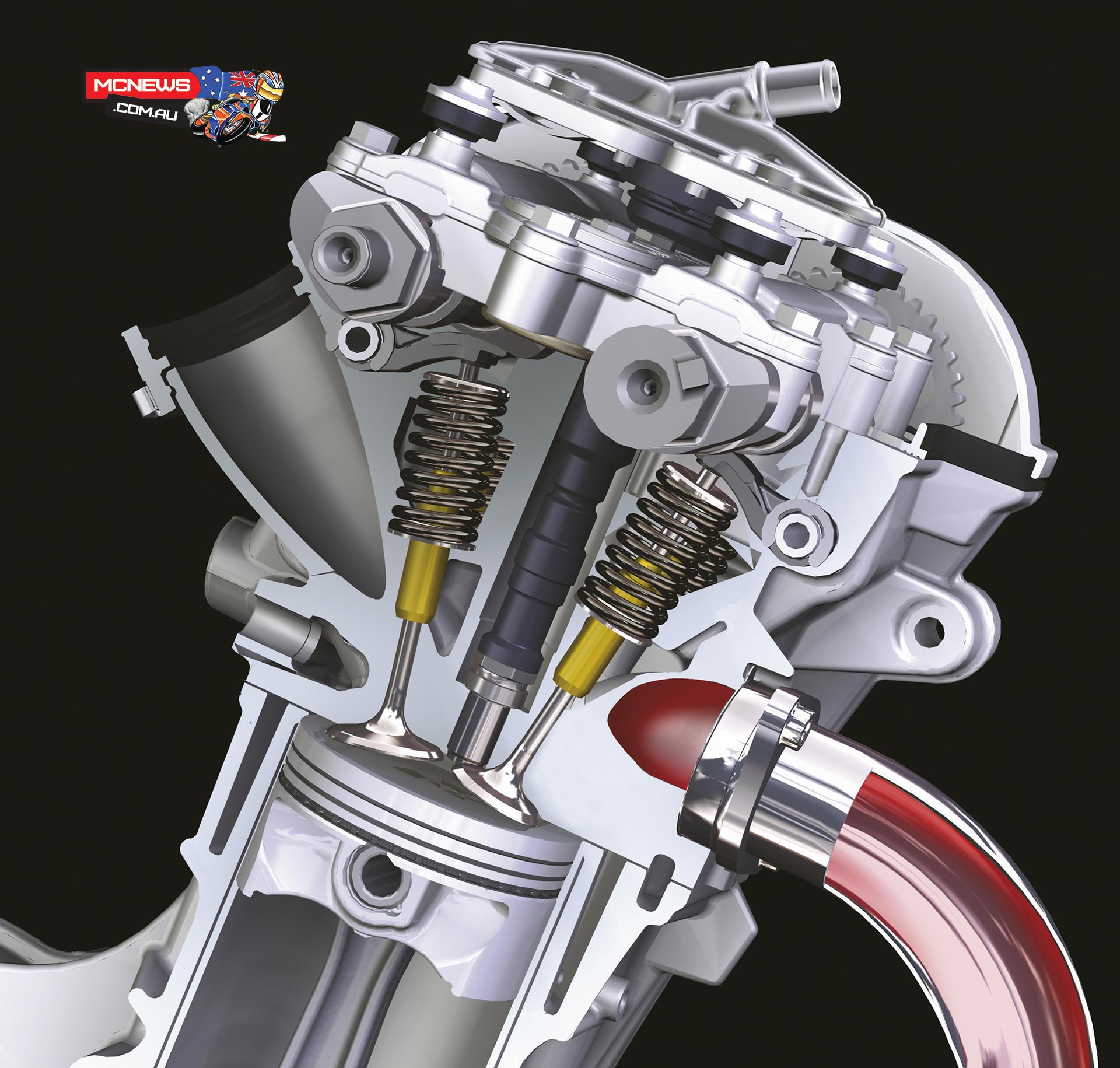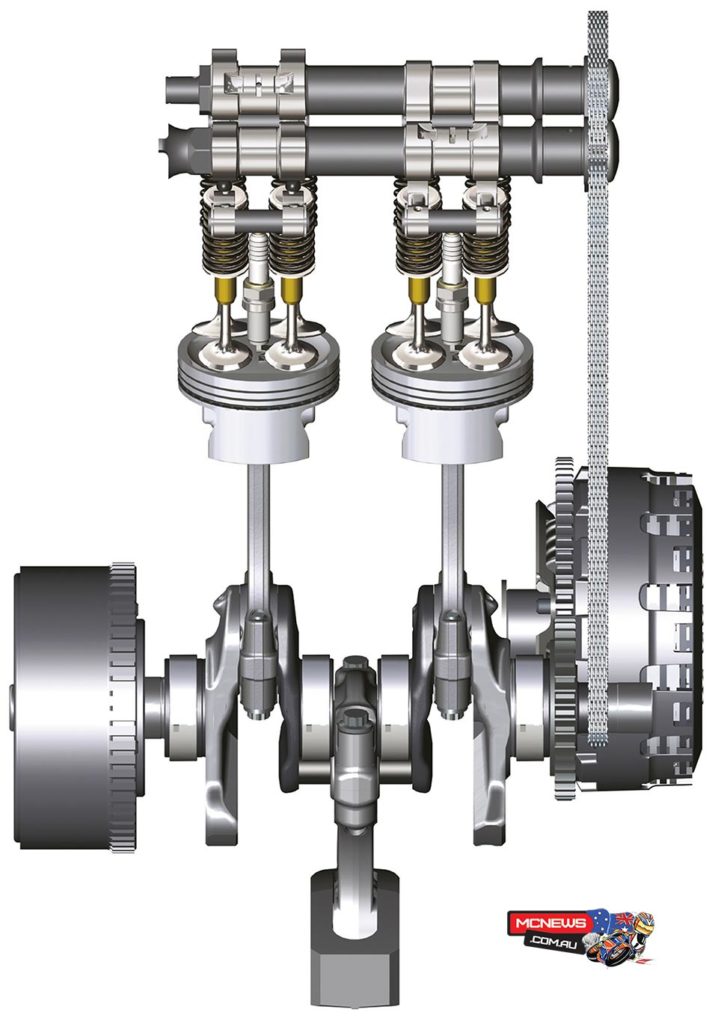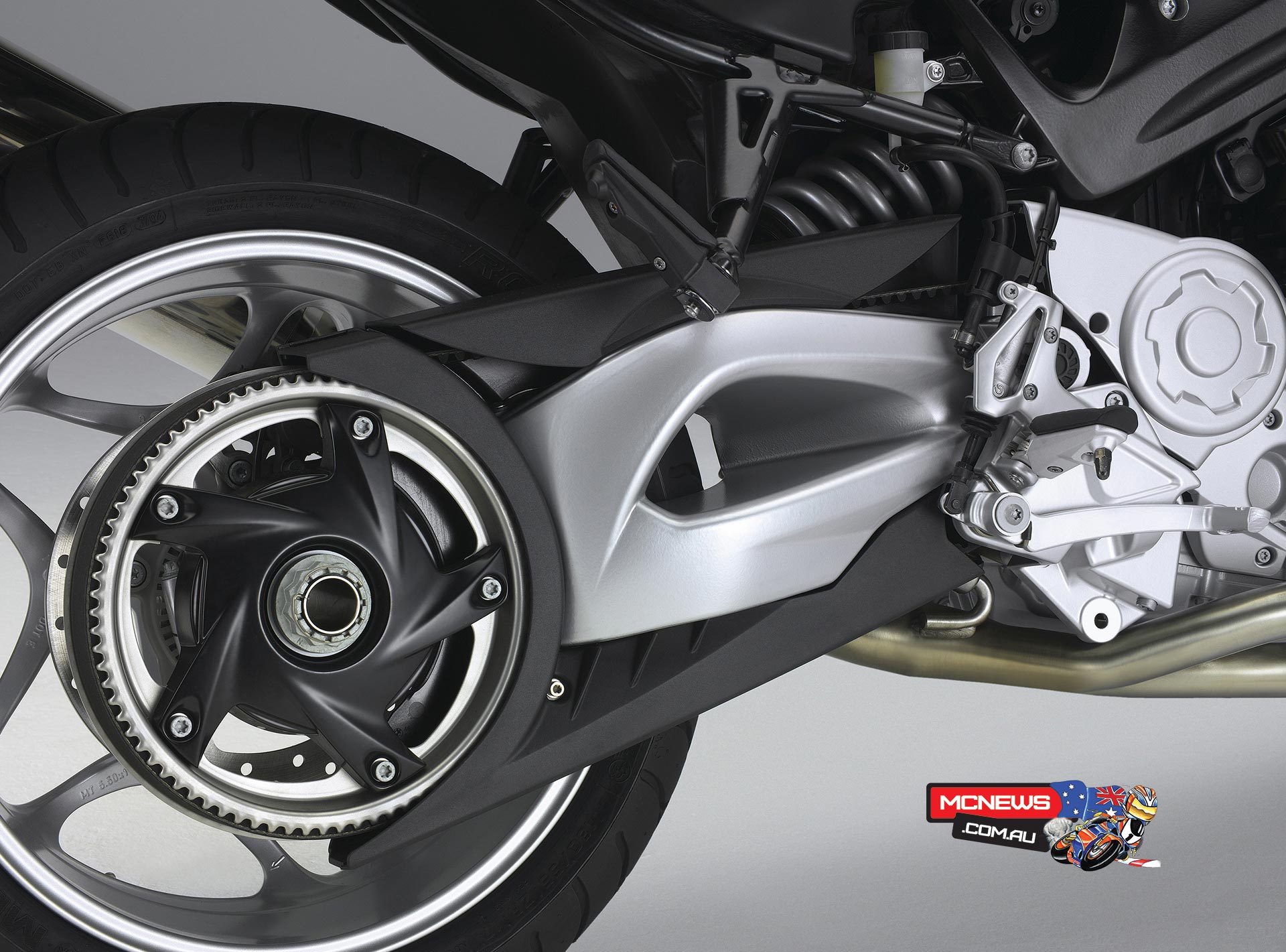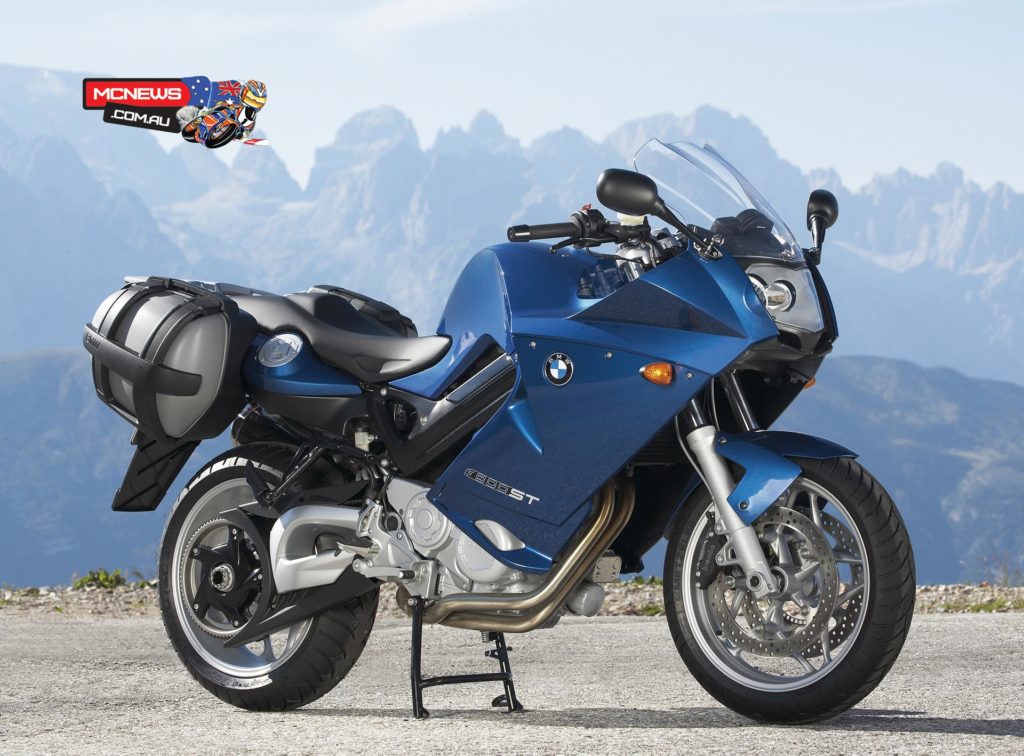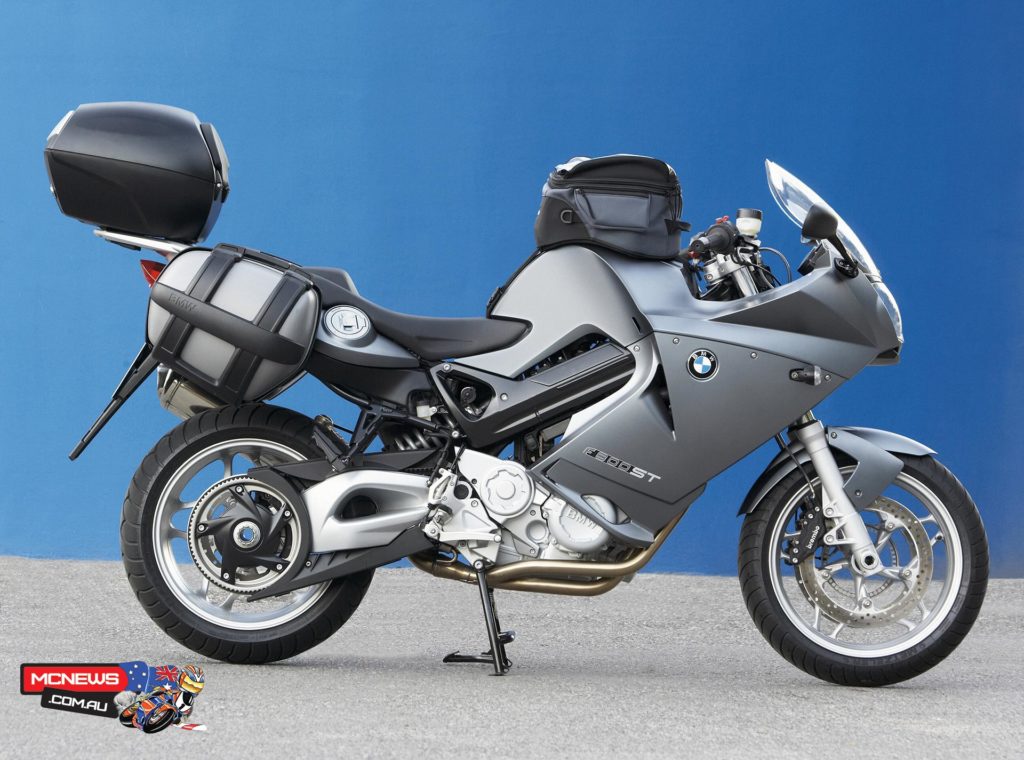BMW F800S and F800ST Tested
Motorcycle Review by Trevor Hedge
BMW likes to do things a bit differently. From their Boxer engines through to their duolever and paralever suspension systems, the German manufacturer has never been content to follow the status quo, but instead like to come up with their own engineering developments on their motorcycles.
With single cylinder machines, large capacity boxer twins and four-cylinder machines already well established in the BMW range, the latest engine configuration to roll out of the Munich factory is an all new parallel twin dubbed the F 800.
The Bombardier-Rotax built 798cc engine provides good drive from 3000rpm right through to the 9000rpm redline. Unusually for a twin, the engine is also extremely smooth with very little of the shudders and shakes common to large capacity twins.
The engine uses a weighted third con-rod to help balance the engine and it certainly seems to work. Double overhead camshafts are driven by a toothed chain and operate four valves per cylinder via follower arms. Service intervals for the valve clearances are only necessary after 20,000km.
46mm throttle bodies look after the induction side of the equation and take their cues from a sophisticated BMS-K engine management system that includes an oxygen sensor in its armoury. A long duct at the front left of the machine feeds a large airbox that has plenty of room to move air thanks to the 16 litre fuel cell being situated under the seat.
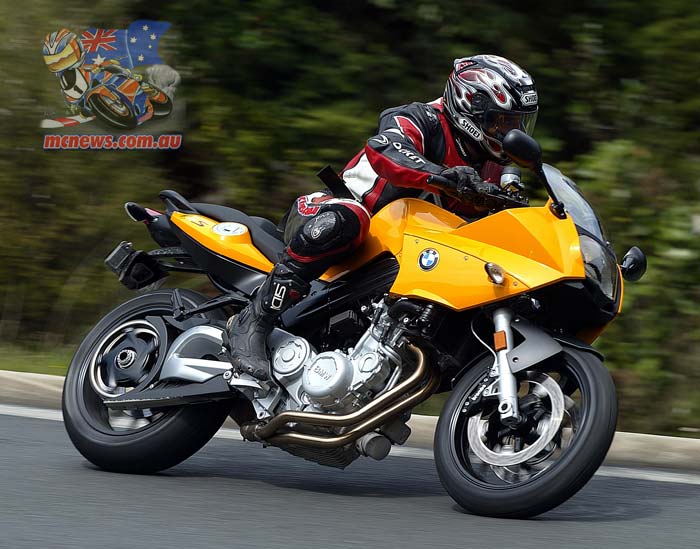
The BMW F 800 I rode had less than 300km on the clock when I trundled out of Mangatangi (NZ). Early in the ride the engine was still very tight and its performance was a little underwhelming. After a couple of hundred kilometres into a fantastic lap of New Zealand’s Coromandel Peninsula, though, it really freed up and responded to the throttle with more instant urge.
Once it had a few hard ridden kilometres on it, the engine certainly felt as though it delivered every one of those claimed 85 ponies at 8000rpm. A claimed 86Nm of torque at 5800rpm also feels pretty close to the mark.
The F 800 donk is light-years ahead of the recent asthmatic 900cc air-cooled Ducati twins in the SS range. However, with a 200cc deficit the BMW does not offer quite as much pull as the latest 1000cc DS series Ducati twins. It still has plenty of go though and is capable of pushing the needle on the 240km/h speedometer most of the way around the dial.
The large two-into-one exhaust sings quite a reasonable note and if some wrist restraint is exercised a touring range of 280km can be achieved. When flogging the thing mercilessly in the hills, this can come back to around 200 kilometers
Shifting gears through the six speed box requires a positive prod of the foot. The shifts are nicer than on earlier BMW machines, but are still not quite up to the standard set by the Japanese. The Germans are clearly getting much closer in this regard, however, and the F 800 certainly shifts much more like a sportsbike than a Buell.
BMW have chosen not to use their customary Paralever single sided swingarm incorporating shaft drive on the F 800. Instead, a new single sided swingarm with a toothed belt-drive system makes its debut on the F 800. I have never been a fan of belt-drive systems on motorcycles that are made for cornering, but I am very pleased to report that BMW have done a great job. The binding common to most belt drive systems never makes its presence felt on the F 800, and the risk of getting a rock between the belt and the toothed cog is also all but eliminated thanks to the belt being nearly fully enclosed.
BMW recommend that belt tension should be checked every 10,000km and should be good for around 50,000km before replacement.
Neither has BMW’s Telelever front end been used on the F 800. Conventional forks with very beefy looking 43mm stanchions are at first glance fairly low spec. The complete lack of preload or damping adjustments will have compulsive knob twiddlers very frustrated, but in reality I found no need to adjust anything. The front end of the machine is simply marvellous.
I pushed the front hard enough to destroy the shoulders of a 120mm Dunlop 220 front tyre in under 400 kilometres of tight and twisting blacktop and have nothing but praise about how well the front end tracks. The route was immensely challenging, and I pushed the front as hard as I would have dared on the best sportsbike in that terrain, and harder than I would have dared on many.
Remember to take those remarks in context. We are talking very challenging roads where the F 800 will allow a rider to go just as fast as any sportsbike. It does not mean that at a full on racetrack pace complete with sticky hoops the F 800 will stay with a sportsbike, but at any remotely sane pace on public roads the F 800 will not be left behind. That is of course if the rider winds some more preload on and a touch more rebound damping out back. On standard settings the rear wallows at even a very moderate pace, but just a little adjustment improves things out of sight.
BMW are clever enough to provide a useful little tool slotted into a recess underneath the seat that makes adjusting the preload wonderfully simple. Likewise, the damping can even be adjusted with a gloved hand thanks to a triangular shaped knob on the shock body. These are the nice little touches of attention to detail that are hallmarks of the BMW brand. Just like the standard heated grips, steering damper and a fuel filler on the side of the bodywork so you don’t have to remove your tankbag to refuel the machine. Those smart fellas back in Germany obviously also ride the bikes they design, something the Japanese designers should also perhaps start doing…
The riding position offers the best of both worlds. The seat-bar-peg axis positions the rider just right. It enables the aggressive rider to position their bodyweight exactly where they want it, while the upright touring rider will also have little to complain about. The S model has a slightly sportier riding position than the ST but it would take an extremely fussy bugger to find reason to complain about either perch. The reasonable 820mm seat height can be reduced to 790mm via a no cost optional lower seat. The F 800 S weighs in at a claimed 182kg with the ST carrying 5kg more but both bikes have a very light feel.
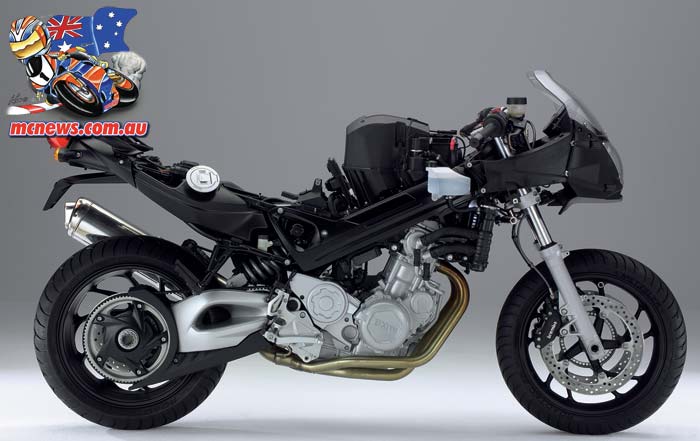
ABS is an optional $1250 ask and it is a nice bit of security when conditions turn nasty. With or without the ABS the brakes are fantastic. The servo assistance often found on many other BMW machines – and universally loathed by all comers – thankfully makes no appearance on the F 800. Large 320mm discs with beefy four-piston calipers are aided by a generously sized 265mm disc at the rear. Steel lines feed the brake fluid to all three calipers. The lever is reach adjustable by an easily accessible knob. After time though the knob would unscrew itself and push the lever further from the bars. Something to keep an eye on.
Electrical signals throughout the machine are taken care of by Can-bus technology with single wires doing away with a vast array of electrical hardware. This aids simplicity and helps to reduce weight.
Instrumentation is comprehensive with a fuel gauge, coolant temperature, clock and the usual speedometer and tachometer. A stopwatch / lap-timer function is operated from the bars. $325 extra gets you a fully featured trip computer with both average and current fuel consumption figures, average speed and distance to empty along with an ambient temperature gauge for good measure. An automatic tyre pressure control system is another optional extra at $375 and informs the rider of any tyre pressure problems via the dash.
The half faired F 800 S has now been released at $14500 and the fully faired ST retails at $15000. The main difference between the two models are that the ST has side panels on the fairing, a taller screen, higher bars, a luggage rack and different rims. The rims on the S model are exquisite in their design.
Both models are available with the normal endless BMW optional equipment, ranging from ABS brakes, automatic tyre pressure control and on board computers to a lower seat and hard luggage. The panniers are expandable from 15 to 25 litres and retail for $515 each. Each pannier is capable of swallowing a full face helmet or up to 8kg of luggage. The fastening kit to fit the panniers to either the S or ST models retails for $185. A genuine 12 litre pouch bag sells for $300, or a much larger tank bag is also available that expands from 14 to 26 litres and can be yours for $490. The smaller pouch bag allows for BMW’s satellite navigation system to be fitted. You starting to understand why some people reckon BMW stands for Bring More Wallet?
A possible stumbling block to the success of this bike is the price. 15k is actually quite cheap for a BMW, and the bike does exude a true quality feel, but when Honda are running out CBR1100XX Blackbirds and Kawasaki are sacrificing ZX-12Rs for similar money, it makes the F 800 look a little expensive. But in reality the F 800 is a very different machine to these larger four cylinder road burners and perhaps has more in common with Ducati’s ST3. Here, on a price point basis, the BMW begins to look a little more competitive. The $18,495 sticker price of the ST3 approaches 20 grand once the pannier option boxes are ticked which gives the BMW a significant advantage. The Ducati does have that lovely DS engine in its favour and is a slightly sportier bit of kit, but in the same breath four grand is a lot of money and the BMW would rarely be left behind.
The F 800 is the kind of machine that grows on you and is one that impressed me greatly. To my eye it is more visually appealing than the Ducati and those lovely touches of user friendliness will make living with the machine an absolute joy. The Ducati has more motor and is perhaps a little more balanced at ten-tenths riding but the BMW is certainly not miles behind in either department. In fact I would be really hard pressed to choose between the two if I was after a twin-cylinder sports-tourer and I have had the luxury of putting plenty of kilometres on both machines. And to both their credits the more time I spent with either of them the more they ingratiated themselves with me and I would take either ahead of the present generation VFR 800, itself a highly accomplished machine. The F 800 is more touring friendly and nicely featured than the cheaper SV1000S Suzuki, which could be seen as a competitor. In the engine department the Suzuki is much stronger, but in the handling stakes the BMW would win the war. BMW are also targeting Ducati Monster buyers with the F 800 S and I guess that is a fair call, but having spent little time with Monsters the only comparison I could offer in that quarter is again the levels of user friendliness and touring abilities the BMW boasts.
If you want to taste the F 800 yourself get in touch with your local BMW dealer. From the feedback I receive through our forum and other places most BMW dealerships around the country are only too eager to let you loose on their motorcycles. Just remember to put a little more preload and damping on at the rear if you want to test its sporting abilities. The spanner for adjusting the preload is fixed to the underside of the seat. Like I said before, smart fellas these Germans…
